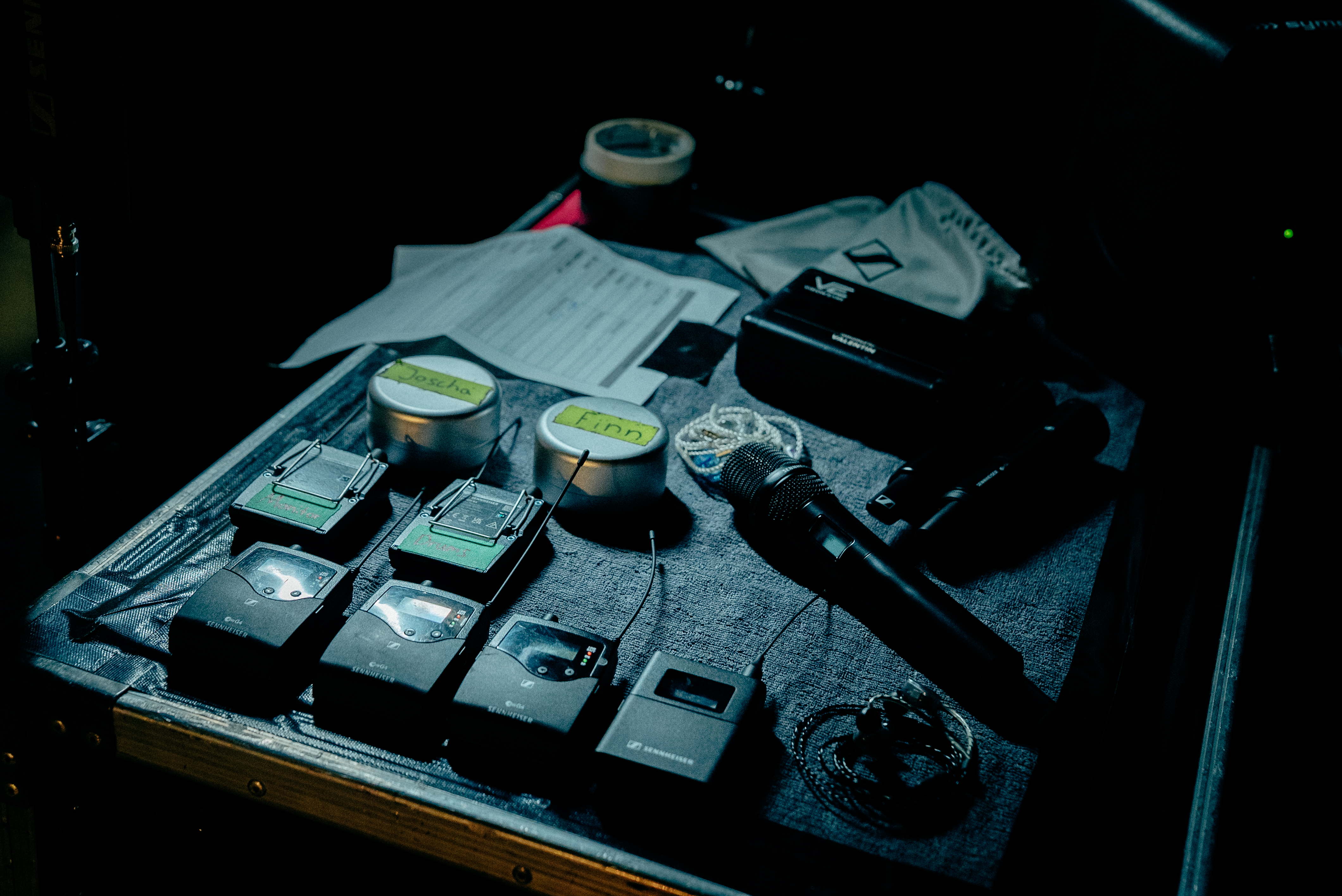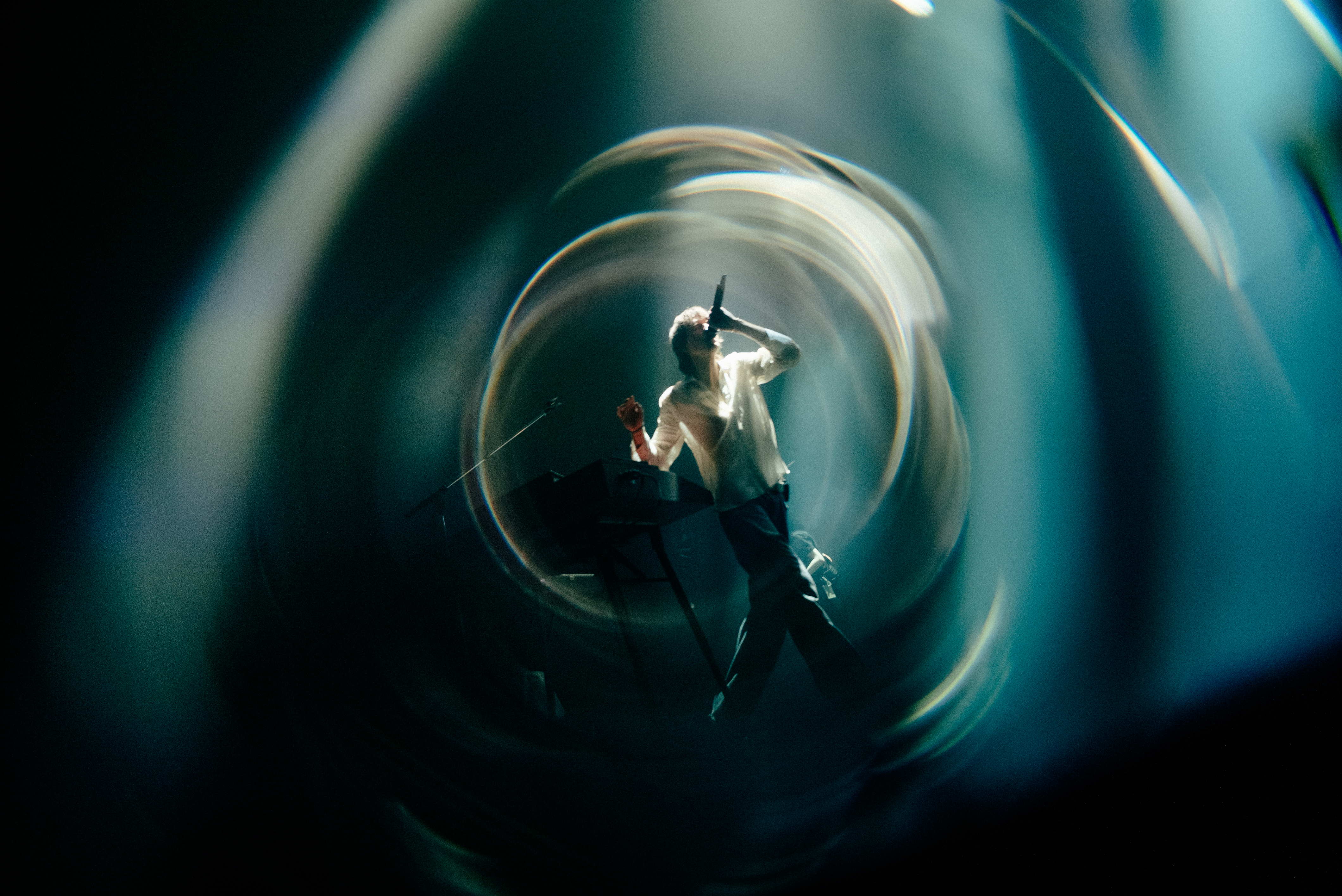“Far from home”: alternative pop band Zimmer90 on their latest European tour

Engineer Nils John uses G4 and EW-DX for the live set-up – and talks about why an exchange of knowledge between younger and older engineers is so important
Wedemark, 19 June 2025 – It was the song “What Love Is” that gave Zimmer90 – Joscha Becker (vocals and keyboard) and Finn Gronemeyer (bass and keyboard) – their international breakthrough around two years ago. It went on to become the soundtrack for millions of recap videos on social media and is the title track for the EP released in 2025 by the talented duo, who also like to express their creativity in art and design. Following their successful tours in Europe and the USA last year, Joscha and Finn, together with their support drummer, have been on their major “Far from Home Tour” since March, performing at clubs and festivals in almost every country in Europe. At the mixing console, sound engineer Nils John is responsible for providing the perfect sound for the two best friends, with equipment that includes wireless EW-DX microphone systems from Sennheiser.
Zimmer90’s sound can be described as both soft and danceable at the same time, featuring warm synth pads, disco basslines and Joscha's unmistakably smooth voice. Nils has been on the road with Joscha and Finn for three years now. He is actually the band’s FoH engineer, but he also takes care of the in-ear monitoring from his FoH console. On the latest tour, the band is “filling venues with audiences of 1500 people in the main cities, and around 300 or 400 in the smaller towns. Our highlight so far was definitely La Cigale in Paris. That was a fantastic concert,” says Nils.

G4 meets “G5”
“When they first started performing their gigs, the band were given the recommendation to use evolution wireless”, he continues. “We began with two IEM G4 bodypacks. This year, we became a Sennheiser endorser and we now also have EW-DX systems in our tour set-up.” For their microphones, the band uses EM 4 Dante EW-DX four-channel receivers with two handheld transmitters and two instrument transmitters.
“Since we started using the evolution wireless G4 in-ears, we've never had any problems or dropouts, and I find their sound very natural. This is a very important aspect for musicians who master their instruments, and particularly because these two guys are also very audiophile. If I make just a slight change to the threshold for the compressor or the EQ, they notice it straight away.”

On the international tour, Nils was more than happy with how the IEM system performed in the A band and he certainly appreciates its reliability: “Especially in the live performance business, a lot of things can happen at the same time. So it really makes sense to have one thing less on your ‘to-do’ list, one thing less to worry about. It’s just fantastic to have a system that you can always rely on. After almost three years, the bodypacks still look as good as new, even though they get dropped from time to time. We’re really impressed with their handling and how they’re built, their durability. And the battery life is also amazing.”
Analogue/digital and why every second counts when you’re on tour
The analogue G4 in-ears are accompanied by EW-DX series digital microphones. “I suppose I’m a bit of the newer generation and I still get to hear all the talk about digital and analogue, especially in the studio. But I don’t really look at it anymore. Of course, I still enjoy an analogue preamp that really sounds good, but I don't see an analogue/digital problem in live technology.”

Fortunately, frequency planning is still very manageable for Nils: “With our band, there are only three musicians on stage, and, particularly with the EW-DX EM 4, I’ve noticed that the scan goes very quickly and all four channels can then be easily allocated. Even though we had gigs in different countries, there were no problems. I did a scan or talked to the local sound engineers – and that was it. When it comes to sync’ing, I think it’s great that you can just leave the transmitters where they are and you no longer need to hold them in front of the receiver. Before you go on tour, one of the priorities is to do everything you can that saves time. Every second counts. And having to take the transmitters off again and hold them next to the receiver is just another extra minute that you can do without.”

So is his job always associated with time pressure? “I would say so, yes. I’ve noticed that in some countries and at some locations they are not familiar with the idea of get-in times. That means that you might not get into the venue until 2pm and the doors might open at 6pm. So everything you do has to be just right, everything has to go quickly. That means that I have to be prepared for the worst, but there are also days when everything is more relaxed. Sometimes, you also have to make the decision to leave things out. For example, on one occasion I simply didn't have enough time to set up crowd microphones for the musicians. But in the end, it’s a show for our audience, and it works just as well without the crowd mics if you’re not specially planning a live recording.”

MD 421 Kompakt
For the toms, Nils uses MD 421 Kompakt. “I’m a real fan of this mic, and because they haven’t been out that long, people are still talking about them. Every time we went to a venue, the house sound engineer would come over to have a look. And the first question was always: ‘Do they sound like the original?’ I didn’t have time to test it myself, so my answer was always: ’I’m sure they know what they’re doing when they decide to bring out a new version of a classic.’ As far as the sound is concerned, I’m definitely satisfied.”
When asked about the mechanics of the large MD 421, Nils says that he has managed to “outsmart” his own MD 421: “I fixed the slider with small cable ties to stop it moving, and because the microphone is very top-heavy, I replaced the screw with a wing screw that you can fasten really tightly by hand. But now we’ve got the Kompakts. Now it’s just: clip it on and let’s go!”
What makes a perfect sound engineer?
“I believe that if younger and older sound engineers could constantly exchange ideas and experience and then become one person, that would be the perfect sound engineer,” Nils says. “Young sound engineers perhaps have a better understanding of the new sound. The main thing is to understand the band and its music, and then to reproduce the sound in the way that the band wants it to be. For example, Zimmer90 has a relatively quiet vocalist. I’ve occasionally heard a sound engineer at a venue make a comment like: ‘We used to have real rock singers. They shouted into the mic. If you want to be heard, you have to shout.’ I’ve noticed things like that, the fact that it’s simply a different sound today. And perhaps also that the human element plays an even bigger role nowadays.
“But I would also add that older sound engineers have acquired a lot of good and important expertise over the years. Back in the analogue age, you just had the one channel strip and you had to work with that. Nowadays, you have a lot of visual elements on equipment, and that can also be a bit confusing at times. It’s always great if you can get some tips and tricks and, above all, if you can benefit from the experience of older sound engineers. After every tour I think: ‘How on earth did I manage to do the tour before this one without having this knowledge?’ You learn something new every time and it’s fantastic if someone can give you some advice from their own personal experience.”

Nils doesn’t have any concerns about the next generation of sound engineers. He expects to see “a large influx of good new sound engineers, partly because everything has become affordable nowadays. Anyone can buy a mixing console today, which was impossible before, or they can start doing their own mixes at home with a DAW.”
Dispelling the myths of the rock and roll life
Nils was an electric bass player in a band that was about to release its first material when Covid struck: “First our release was postponed and then it was cancelled altogether, and then the band split up. But I was already working as a sound engineer in a club at the time. Fortunately I was on a short-time working arrangement, and I somehow gave up the idea of playing in a band. After that, I got into the sound engineering business more and more.”
Now there is a different personal relationship between a band and its sound engineer than there was in the past. “Nowadays, people tend to talk more about feelings, and you’re often asked how you feel and whether things can be improved.”
There is still a persistent belief among the general public that being on tour means having an exciting life and a lot of travel. “Usually, you don’t get to travel more than 20 metres from the venue,” Nils laughs. “Whenever I tell friends that I’m going on tour, the first thing they think about is rock and roll, alcohol, drugs and wild parties.” And they are surprised to hear how disciplined and focused the bands are. “All of the bands that I’ve toured with so far prefer to drink tea rather than alcohol, and tend to go to bed early in order to be fit and ready for the next show. I would say that touring today is very much about the feel-good factor. Everyone should feel comfortable, no-one is excluded and everyone is equal.”
This summer, Zimmer90 will be playing the Ulmer Zelt Festival, Wein am Stein, and Sound of the Forest in Germany; St. Gallen Open Air in Switzerland; El Sol, Vida Festival, and Mobo Festival in Spain; and Beautiful Decay in Luxemburg.
For more information, please visit ZIMMER90.
Please visit The Pulse for a Zimmer90 rig rundown by Nils.

(Ends)
The high-resolution images accompanying this media release plus additional images can be downloaded here.
Zimmer90 + Sennheiser EW-DX_ENG.docx
DOCX - 4.0 Mb
Zimmer90 + Sennheiser EW-DX_ENG.pdf
PDF - 678 Kb


